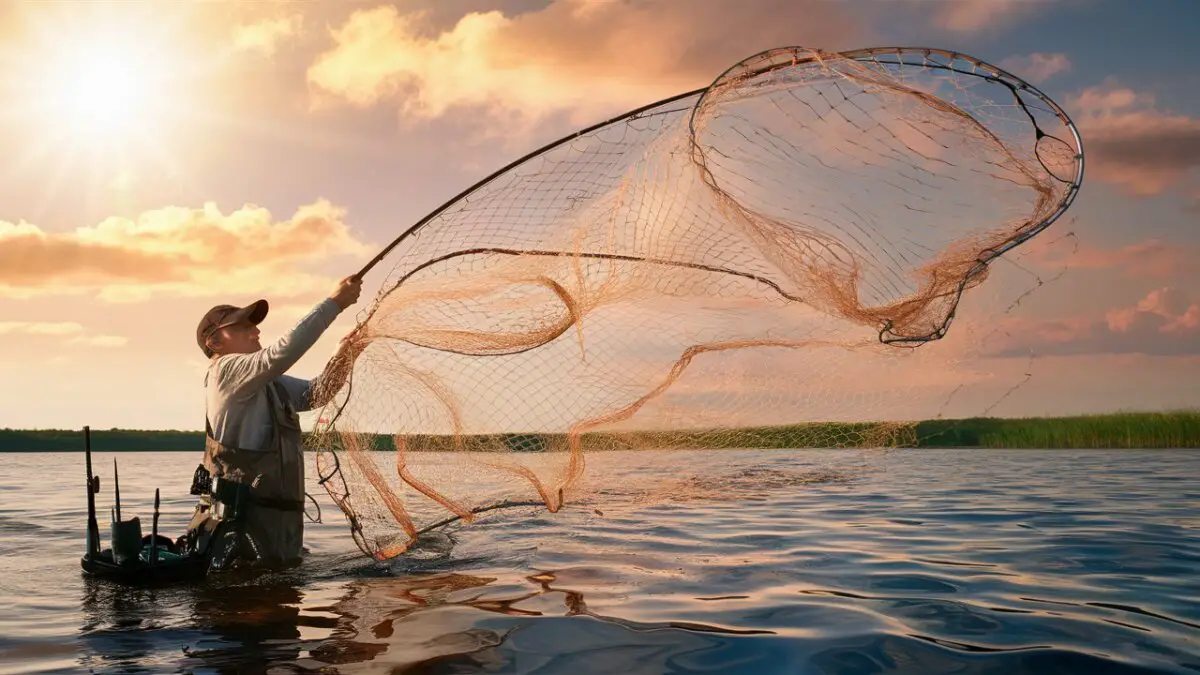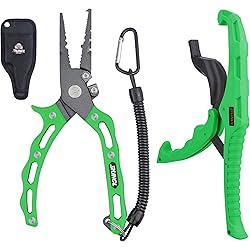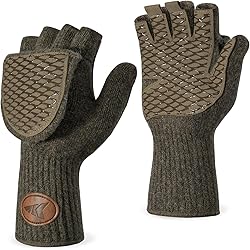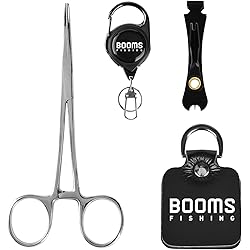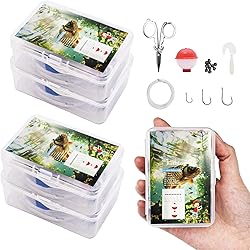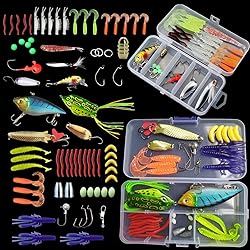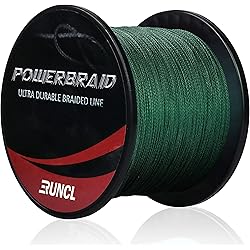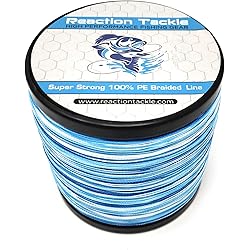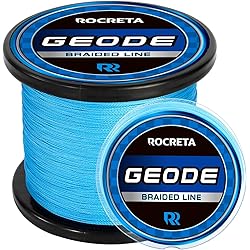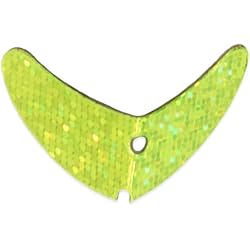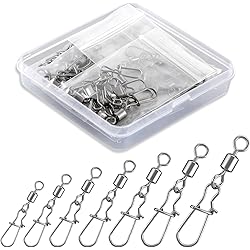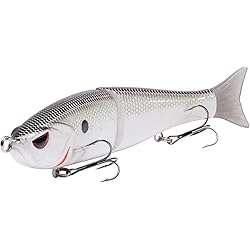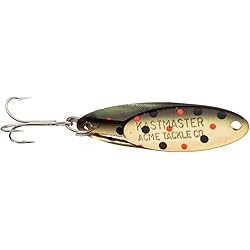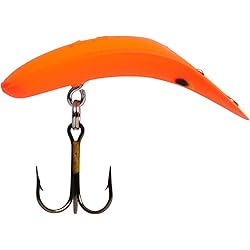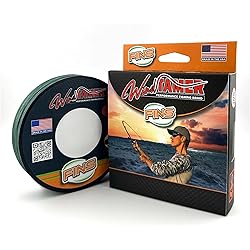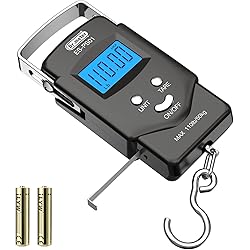Quality Novice Bait Fishing Cast Nets, One of the most gratifying and tranquil outdoor pursuits is fishing. It is important to have the proper equipment when fishing, whether it is for sport or food.
A cast net is one of the most important pieces of equipment for any angler, but it’s especially important for baitfishers.
Knowing the ins and outs of cast nets might be a little intimidating for beginners. The purpose of this guide is to provide you with information about excellent beginner bait fishing cast nets, so you can make an informed choice and have a better fishing experience.
An excellent cast net should be lightweight, strong, and efficient at catching baitfish. When choosing a cast net, consider things like net size, mesh size, and material.
Beginners should use smaller, easier-to-handle nets with a radius of 4 to 6 feet. A 3/8-inch mesh can effectively capture a variety of baitfish. Seek out nets composed of premium materials with strength and longevity, such as nylon or monofilament.
Take into account the net’s weight as well; heavier nets sink more quickly and are therefore more useful in deeper waters.
Novice anglers can make their fishing excursions more pleasurable and productive by selecting the appropriate throw net.
Quality Novice Bait Fishing Cast Nets

What is a Cast Net?
A cast net, thrown by hand, traps fish as it descends and spreads across the water. The cast net’s design is simple:
It consists of a circular net with tiny weights strategically placed around its edge. When thrown, the weights cause the net to sink, trapping fish underneath.
Cast-net usage is a skill that requires practice to master. The fisherman must throw the net so that it opens completely before entering the water.
The fisherman typically accomplishes this by spinning the net while holding it in one hand, then releasing it to allow centrifugal force to spread it out. They pull the net down until it touches the water’s surface, creating a circular trap.
Fish inside the radius become trapped beneath the net as it drops. After that, the fisherman seals the net around the fish he has caught by pulling a retrieval line that is fastened to the middle of the mesh.
In shallow seas, where fish are more concentrated and easier to catch, cast nets work especially well. Due to its ease of use, effectiveness, and little environmental impact, small-scale and recreational fishermen all over the world prefer this age-old fishing technique.
Why Use a Cast Net?
Catching baitfish, or small fish used to entice larger fish, is a particularly beneficial use for cast nets. These nets are effective, with a high baitfish catch rate per toss.
Cast nets are a quick and simple technique for inexperienced fishermen to collect live bait, which works much better than synthetic lures.
The natural movements and fragrances of live baitfish are more effective at luring larger fish than artificial baits, therefore improving the odds of a successful catch.
Furthermore, with some practice, cast nets are relatively simple to use. The angler simply throws the net into the water, allowing it to sink and spread out before hauling it back in, typically capturing any fish within its radius.
This approach saves money because it eliminates the need to buy bait, making it both efficient and economical.
Depending on their fishing requirements, fishermen can target different kinds of baitfish with cast nets, which come in a variety of sizes and mesh patterns.
Because of their adaptability and effectiveness, cast nets are essential equipment for professional and recreational anglers who want to maximize their fishing success. All things considered,

Choosing the Right Cast Net
There are a number of things to take into account while choosing a cast net, particularly for novices. The following are some important points to remember:
1. Dimensions and Weight: The net’s dimensions dictate the area it will cover when thrown. Smaller nets (6–8 feet in radius) may be simpler for beginners to handle. The net’s weight impacts how rapidly it sinks; a heavier net sinks more quickly but may be trickier to toss.
2. Mesh Size: Depending on the mesh size, you can capture the largest fish. Larger meshes work better for larger fish, whereas smaller mesh sizes work best for capturing smaller baitfish. Novices should select a mesh size that corresponds to the species they are targeting.
3. Material: Cast nets typically consist of nylon or monofilament. Although they can be heavier and less flexible, nylon nets are more resilient. Although they are more flexible and lighter, monofilament nets could not last as long.
4. Handline Length: The handline should have a controllable length. Although a longer handline has a wider reach, it can be harder for novices to control.
5. Simplicity of use: Use nets with features such as weighted lines for fast sinking and simple retrieval systems to enhance the simplicity of use.
American Fishing Cast Net Saltwater Freshwater
How to Use a Cast Net
Effective cast net use requires some practice, but even novices can learn the skills with the appropriate method. Here’s a step-by-step tutorial to get you going:
Pick the Correct Net: Depending on the type of fish you are aiming for, choose a cast net with a mesh and size that works for them. For novices, smaller nets are simpler to handle.
Get the Internet Ready: Hold the net by the yoke, the middle section where the netting converges, to untangle it. To prevent snags, properly coil the hand line.
Grip the Net: Allow the net to hang down while using your dominant hand to hold the yoke. Gather the net skirt with your other hand, approximately halfway down, to form a manageable bundle.
Load the net: To ensure an even spread when thrown, drape a portion of the net over your dominant hand and shoulder.
Position and Throw: Face your target while keeping your feet shoulder-width apart. To disperse the net uniformly over the water, swing it in a smooth, circular motion and release it with a flick of the wrist.
Retrieve the net: After letting it sink, draw the hand line to enclose the fish in the net. To get your catch, gently raise the net.
Regular practice of these methods can help you become more proficient and efficient. If you have patience and perseverance, you’ll quickly become an expert at casting.
Quality Novice Bait Fishing Cast Nets

Maintenance and Care of Cast Nets
Proper upkeep and care can increase the lifespan and efficacy of your cast net. The following advice can help you maintain the quality of your network:
1. After using, rinse
Over time, debris and saltwater can harm your net. Clean your net with fresh water after each use to remove salt and debris.
2. Pat dry before storing.
Before storing your net, let it thoroughly dry. A wet net stored for a long time may develop mold and mildew, which may erode the material.
3. Handle storage correctly.
Keep your net out of direct sunlight and in a cool, dry location. Over time, UV radiation may deteriorate the material. For storing, a bucket or net bag works well.
4. Conduct regular inspections.
Check your net frequently for damage indicators like rips or frayed threads. As soon as possible, fix any damage to stop it from getting worse.
Top Quality Cast Nets for Novices
Here are a few top-notch cast nets for beginners to get you started:
1. The Betts Premium Cast Net with Old Salt is available.
Beginners frequently choose the Betts Old Salt Premium Cast Net because of its dependability and simplicity of usage. Its 3/8-inch mesh size allows for the capture of a diverse range of baitfish. The net’s use of premium monofilament makes it both robust and lightweight.
2. The Fitec RS750 Super Spreader has a cast net.
The Fitec RS750 Super Spreader Cast Net efficiently catches bait and is easy to throw. Its sturdy nylon construction and 5/8-inch mesh size make it a fantastic choice. The net is perfect for deeper seas because of its 1-pound-per-foot weight, which guarantees that it lowers swiftly.
3. The Ahi USA 200 Series Cast Net is available.
The Ahi USA 200 Series Cast Net is an excellent choice for beginners looking for a dependable and reasonably priced net. High-quality monofilament constructs it, featuring a mesh size of 3/8-inch. Because of its quick sinking speed of 1.35 pounds per foot, the net works well in both shallow and deep waters.
4. A professional-grade cast net for the Bait Buster
For those new to fishing who desire a durable net, the Bait Buster Professional Grade Cast Net is ideal. Its sturdy nylon construction and 3/8-inch mesh size make it a fantastic choice. The net efficiently captures baitfish with its 1.5-pound weight per foot and sinks quickly.
Saltwater Fishing Cast Net 3/8 and 1/4 Mesh with Heavy Duty Gray Sinker
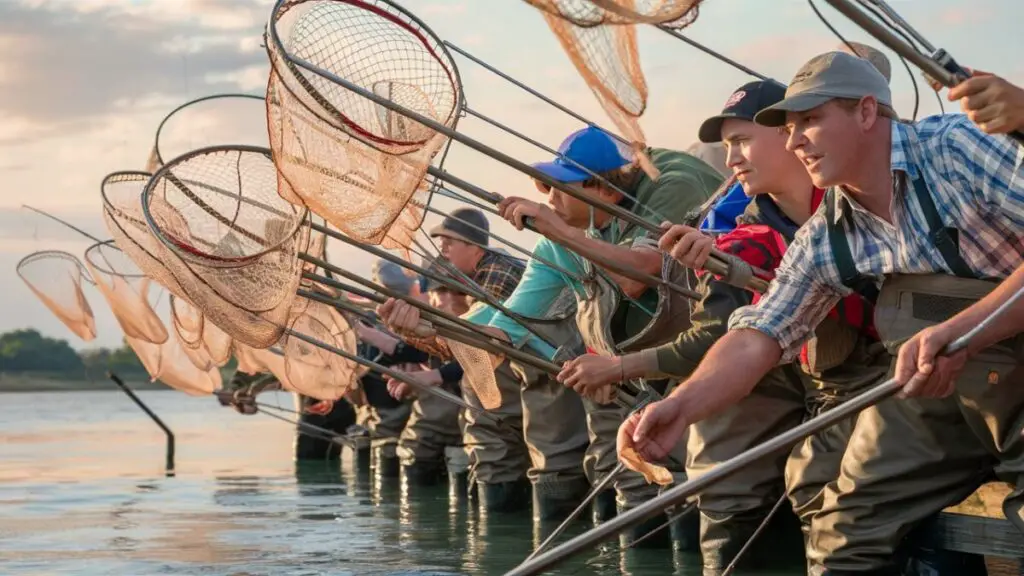
Tips for Successful Bait Fishing with Cast Nets
Effective bait fishing with a cast net involves some skill and experience, even with the proper gear. The following advice will enable you to achieve maximum success:
1. Select the Appropriate Site
The best places to find baitfish are in shallow areas next to rocks, piers, and docks. Regions with calm water and plenty of shelter are more likely to host baitfish.
2. Test the water.
Keep an eye out for indications of baitfish activity, including little splashes or groups of fish swimming close to the top. The presence of diving birds is another indicator of baitfish.
3. Exercise patience.
It takes patience to cast a net for bait. If your first toss doesn’t result in any fish, consider changing locations or giving it a few minutes before trying again.
4. Work on your method.
You will get more proficient at casting the more you practice casting, the more proficient you will become. To get the throw perfect, practice in an open space like a park or beach.
5. Use a bail pail.
To keep your baitfish alive and active after you’ve captured them, store them in a bait bucket with aerated water. Using live bait to lure larger fish yields greater success.
Conclusion
Bait fishing is excellent for beginners. A cast net is a necessary piece of gear for any angler who wants to capture baitfish on their own.
Beginners can choose a cast net that best meets their needs by being aware of the various features, including size, mesh, material, weight, and handline length.
With patience and practice, novice fishermen can improve their overall fishing experience by learning how to use cast nets quickly.
Investing in a high-quality cast net and dedicating some time to learning appropriate casting skills can yield long-term benefits.
You will acquire a greater understanding of the craft of fishing in addition to having a consistent supply of live bait.
Furthermore, becoming proficient with cast nets can lead to new fishing chances and the ability to catch a greater range of fish species.
Gaining proficiency with this method will increase your fishing efficiency and success rate, increasing the enjoyment and satisfaction of each trip.
Reliability and durability characterize high-quality cast nets, so your investment will last for many fishing seasons. Take on the task, relish the education process, and have fun casting!
Hooked on Tech: Exploring the latest Fishing Gadgets that Anglers swear by.
In the realm of angling, where tradition and technology often converge, a new wave of fishing gadgets has emerged, transforming the way anglers approach their craft.
From advanced fish finders to smart bait systems, these innovations have not only revolutionized the fishing experience but have also garnered a loyal following among anglers worldwide.
RUNCL Fishing Plier, Fish Lip Gripper Kit, Fishing Remover Extractor, Multi-Function Fishing Tools for Saltwater, Freshwater, Ice Fishing, Premium Fishing Gifts for Men
Now retrieving the price.
(as of November 5, 2025 19:02 GMT +00:00 – More infoProduct prices and availability are accurate as of the date/time indicated and are subject to change. Any price and availability information displayed on [relevant Amazon Site(s), as applicable] at the time of purchase will apply to the purchase of this product.)XBLACK Fishing Tool Kit Fishing Pliers Fish Gripper Fishing Scale Fish Grip Tools Set Saltwater Resistant Fishing Gear
$13.98 (as of November 6, 2025 08:53 GMT +00:00 – More infoProduct prices and availability are accurate as of the date/time indicated and are subject to change. Any price and availability information displayed on [relevant Amazon Site(s), as applicable] at the time of purchase will apply to the purchase of this product.)KastKing Bully Wooly Convertible Mittens – Premium Wool Fingerless Fishing Gloves with Magnetic Flip-Top, Fleece Lining, Non-Slip Grip, Extra-Long Cuff, 4-Way Stretch, Cold Weather Winter Gear
$31.49 (as of November 5, 2025 19:02 GMT +00:00 – More infoProduct prices and availability are accurate as of the date/time indicated and are subject to change. Any price and availability information displayed on [relevant Amazon Site(s), as applicable] at the time of purchase will apply to the purchase of this product.)Booms Fishing FF2 Fly Fishing Accessories and Tools Kit: Forceps, Nipper, Line Straightener, Zinger, Two-Sided Fly Box Assortment
$13.49 (as of November 6, 2025 08:53 GMT +00:00 – More infoProduct prices and availability are accurate as of the date/time indicated and are subject to change. Any price and availability information displayed on [relevant Amazon Site(s), as applicable] at the time of purchase will apply to the purchase of this product.)Aventik Fishing Accessories Fly Fishing Zinger Retractor 3 pcs
$6.15 (as of November 6, 2025 14:46 GMT +00:00 – More infoProduct prices and availability are accurate as of the date/time indicated and are subject to change. Any price and availability information displayed on [relevant Amazon Site(s), as applicable] at the time of purchase will apply to the purchase of this product.)Mini Fishing Kits Bulk for Kids, Small Fishing Survival Kit, Portable Fishing Gear Fishing Tackle with Case, Emergency Survival Fishing Accessories for Kids Beginner
$9.99 (as of November 6, 2025 08:53 GMT +00:00 – More infoProduct prices and availability are accurate as of the date/time indicated and are subject to change. Any price and availability information displayed on [relevant Amazon Site(s), as applicable] at the time of purchase will apply to the purchase of this product.)Lix&Rix Spiral Elastic Coiled Lanyards with Clips and Spring Rings, 2pcs
$4.49 (as of November 5, 2025 00:38 GMT +00:00 – More infoProduct prices and availability are accurate as of the date/time indicated and are subject to change. Any price and availability information displayed on [relevant Amazon Site(s), as applicable] at the time of purchase will apply to the purchase of this product.)40PCS Fishing Lures Baits Tackle Including Crankbaits, Spinnerbaits, Plastic Worms, Jigs, Topwater Lures, Tackle Box and More Fishing Gear Lures Kit Set, 40PCS
Now retrieving the price.
(as of November 5, 2025 19:02 GMT +00:00 – More infoProduct prices and availability are accurate as of the date/time indicated and are subject to change. Any price and availability information displayed on [relevant Amazon Site(s), as applicable] at the time of purchase will apply to the purchase of this product.)RUNCL PowerBraid Fishing Line 4/8/9 Strands, Braided Fishing Line 300/500/1000Yds – Seamless Weaving Tech, Enhanced Coating Tech, Zero Stretch, High Sensitivity, Smaller Diameter – Braid Line 15-115LB
$38.99 (as of November 6, 2025 01:15 GMT +00:00 – More infoProduct prices and availability are accurate as of the date/time indicated and are subject to change. Any price and availability information displayed on [relevant Amazon Site(s), as applicable] at the time of purchase will apply to the purchase of this product.)Reaction Tackle Braided Fishing Line – Pro Grade Power Performance for Saltwater or Freshwater Fish – Colored Fishing Line Braid for Extra Visibility
$17.98 (as of November 5, 2025 01:03 GMT +00:00 – More infoProduct prices and availability are accurate as of the date/time indicated and are subject to change. Any price and availability information displayed on [relevant Amazon Site(s), as applicable] at the time of purchase will apply to the purchase of this product.)ROCRETA Geode Braided Fishing Line, Super Strong Power, Colored Fishing Line Braid for Saltwater and Freshwater Fish
$23.95 (as of November 5, 2025 19:02 GMT +00:00 – More infoProduct prices and availability are accurate as of the date/time indicated and are subject to change. Any price and availability information displayed on [relevant Amazon Site(s), as applicable] at the time of purchase will apply to the purchase of this product.)Goture Glide Baits,Jointed Swimbait with Brush Tail,Bass Pike Salmon Trout Muskie Fishing Lure,Slow Sinking Fishing Bait Trout Lures Brushtail with Treble Hooks,Built-in Steel Balls,Gifts for Men
$19.99 (as of November 6, 2025 04:26 GMT +00:00 – More infoProduct prices and availability are accurate as of the date/time indicated and are subject to change. Any price and availability information displayed on [relevant Amazon Site(s), as applicable] at the time of purchase will apply to the purchase of this product.)Mack’s Lure Smile Blade® Assorted 5-Pack
$4.71 (as of November 4, 2025 18:38 GMT +00:00 – More infoProduct prices and availability are accurate as of the date/time indicated and are subject to change. Any price and availability information displayed on [relevant Amazon Site(s), as applicable] at the time of purchase will apply to the purchase of this product.)Movtovic 70 Pcs Corrosion Resistance Fishing Swivels Snaps, 7 Sizes Detachable Snap Swivels, Convenience Pack Swivels Fishing Tackle for Recreational Fishing
$5.29 (as of November 5, 2025 19:02 GMT +00:00 – More infoProduct prices and availability are accurate as of the date/time indicated and are subject to change. Any price and availability information displayed on [relevant Amazon Site(s), as applicable] at the time of purchase will apply to the purchase of this product.)Bassdash SwimShad Glide Baits Jointed Swimbait Bass Pike Salmon Trout Muskie Fishing Lure
$11.98 (as of November 5, 2025 01:21 GMT +00:00 – More infoProduct prices and availability are accurate as of the date/time indicated and are subject to change. Any price and availability information displayed on [relevant Amazon Site(s), as applicable] at the time of purchase will apply to the purchase of this product.)Acme Kastmaster Fishing Lure Hammered Gold 1 Oz
$11.79 (as of November 4, 2025 18:38 GMT +00:00 – More infoProduct prices and availability are accurate as of the date/time indicated and are subject to change. Any price and availability information displayed on [relevant Amazon Site(s), as applicable] at the time of purchase will apply to the purchase of this product.)Yakima Bait Flatfish F-4 High Action Plug
Now retrieving the price.
(as of November 4, 2025 18:38 GMT +00:00 – More infoProduct prices and availability are accurate as of the date/time indicated and are subject to change. Any price and availability information displayed on [relevant Amazon Site(s), as applicable] at the time of purchase will apply to the purchase of this product.)
